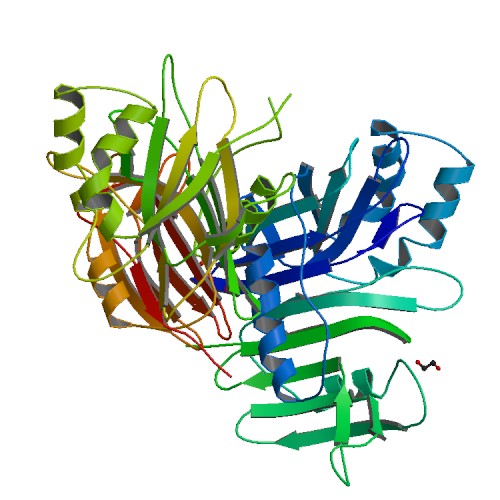News
GMO viruses as laboratory tools to be spread in the environment ?
In a recent article, researchers detail several ongoing projects for the genetic modification of viruses. Some of these could be deliberately released into the environment. On February 7, 2024, the European Parliament asked the European Commission to study the potential deregulation of these GMO viruses. A general overview of those projects seems therefore necessary.

Like plants, bacteria, yeast and animals, viruses are also subject to genetic modification. As evidenced by a recently published article1, research and development projects involving GMO viruses are taking shape. While there are obvious questions about health, environmental and even bioterrorism risks, an initial overview of current projects is needed to gain a better understanding of the domain. Especially as, in the coming months, the European Union may find itself discussing the complete deregulation of GMO micro-organisms, including viruses.
Use of genetically modified viruses: what are we talking about?
Right at the start of their article, the researchers, who work for the Austrian Ministry of the Environment and the German Federal Agency for Nature Conservation, set the scene : « the spectrum of possible use scenarios for GM viruses is very broad » ! Indeed, the type and objectives of possible genetic modifications are extremely varied. Viruses can be genetically modified to :
- modify one or more of their characteristics (e.g. attenuate virulence),
- modify the organisms they infect, without these organisms being directly genetically modified (by stopping the expression of a protein, for example),
- or to induce genetic modifications in infected organisms (by providing the genetic sequences encoding a Crispr/Cas system, for example).
GM viruses used as laboratory tools
The first use identified by researchers is the use of viruses as laboratory tools. Certain viruses are used to silence the expression of genetic sequences in organisms (notably tomato, tobacco, pepper or Arabidopsis). The general principle is to use GMO viruses to introduce genetic sequences from the same plant’s genome into a plant. This sequence is then expressed in “higher” quantities. In response, the plant switches off the expression of this sequence. Researchers can then study the effects of not expressing a particular plant genetic sequence.
GM virus used as vaccines
Conversely, rather than silencing protein expression, some viruses are genetically modified to express different proteins or protein parts. The authors detail that the desired proteins – transgenic by definition – can be subunits, parts of vaccines, protein nanoparticles and “virus-like” particles. Commercial applications are already envisaged. One example is a baculovirus genetically modified to express a protein from a virus infecting carp. This transgenic baculovirus will be used to infect insect cells grown in vitro. These cells will in turn express the carp-infecting virus protein. The fish will then be fed with the insect cells in the hope of inducing a preventive immune response. In this case, the virus is not the vaccine, but a tool to hopefully produce a protein that will induce a vaccine response.
Finally, the authors report “various vaccine types for a wide range of animal species“. Projects include GM viruses for direct use as vaccines in poultry, fish, pigs, cattle and industrially farmed fish, but also in wild populations. They also report having identified a number of vaccine projects using GM viruses for dogs, cats, sheep and rabbits. There is also a project to vaccinate a wild animal, the Steller sea lion, and another to vaccinate African rodents against Lhasa fever.
Some of these projects may involve dissemination in the environment itself. Some vaccines, for example, consist of viruses genetically modified to have a lower replication rate, giving the immune system time to react before the virus multiplies too much. Others are used as vaccines, but still have the capacity to replicate. The researchers state that such vaccines are used “to prevent or treat zoonotic diseases“.
Viruses to modify other organisms
Another use of GMO viruses put forward by researchers is, this time, the one as a tool inducing genetic modifications. To this end, viruses can be used as vectors to enable the expression of “larger-sized recombinant constructs“, which will cause genetic modifications. By way of example, researchers are talking about a “hypercompact CRISPR-Cas nuclease” for use in gene therapy. The idea is to have an adenovirus (widely used as a vector, i.e. a transporter, in this field) express a miniature Crispr system that fits into the small adenovirus genome. To be effective in eukaryotic cells (the type of cells found in animals and plants), the genetic sequences of the Crispr system are also genetically modified.
To sum up, viruses are genetically modified to cause infected human cells to express a modified Crispr/Cas complex, which in turn modifies the genome of the infected cells.
The authors of the paper also give the example of viruses that are genetically modified to express not the complete Crispr system, but “only” the RNA that serves as a guide for a Crispr/Cas system. These GM viruses then infect plants that have previously been genetically modified by transgenesis to express a Cas9 nuclease. The nuclease expressed by the transgenic plant will then use the guide RNA provided by the virus to genetically modify the plant so that it has “heritable mutations“, i.e. mutations that will be passed on to subsequent generations.
GM Viruses as “biocontrol agent”
“Only a few publications addressing the use of GM viruses against plant pathogens” have been found by the researchers. An example is given for citrus trees. Based on the strategy of silencing the expression of a genetic sequence, researchers are infecting citrus trees with viruses genetically modified to change certain visual, olfactory or gustatory signals. This is said to attract the Asian citrus psyllid, a sap-sucking insect that attacks citrus trees by transferring a bacteria responsible for Huanglongbing disease. Having attracted the insects, these trees would act as insect traps, making it easier to remove the insects using insecticides or other means.
Faced with the same disease affecting different citrus fruits (lemons and oranges, for example), researchers in the USA have been testing the use of genetically modified viruses since 2020. These viruses are genetically modified to express a small spinach protein with antimicrobial properties.
Some projects, described as biocontrol for biotechnological control, aim to “control […] agricultural insect pests” using GMO viruses. Such viruses could be used as insecticides. One example given concerns the development of Chilo iridescent viruses genetically modified to be transformed into “a more potent control agent by the insertion of a toxin gene“. In the reported study, the toxin chosen, and expressed by the GMO virus, targets Galleria mellonella moth larvae. In 2015, a scientific article reported on GMO baculoviruses used as insecticides2. These viruses are genetically modified to produce various insecticide molecules, such as neurotoxins or degradation enzymes.
Work using genetically modified viruses to infect bacteria (such viruses are called bacteriophages) have also been identified. GM bacteriophage virus projects are envisaged to modify the specificity of viruses for a host, to carry antimicrobial substances, in human and veterinary therapy as well as for industrial uses. Among the approaches envisaged, the researchers report on a proposal by researchers at the University of Wagenigen (Netherlands) to genetically modify bacteriophages so that they “to protect or cure crop and horticultural plants (e.g., olive trees and vine) against a bacterial plant pathogen, Xylella fastidiosa”.
In their bibliography, the researchers also cross-referenced approaches of animal population control using GM viruses. These strategies involve “immunocontraception“, i.e. inducing an immune response that prevents either gamete production, fertilization by another gamete, or embryo development. Although pre-studies have been carried out to target rodents, rabbits, toads and carp in Australia, several problems linked to dissemination in the environment have arisen: “insufficient duration of sterility […] ineffective transmission of the viral vector“. The researchers point out that these approaches using GM viruses have since been abandoned.
The range of uses for genetically modified viruses is therefore quite broad. From laboratory tools, these GM viruses are now used or can be used in human health (gene therapy) or animal health (vaccination, population control…). Tomorrow, their use in agriculture, with dissemination into the environment, could become a reality. A reality that would be all the more rapid if the European legislator were to decide that such releases of viruses (like those of GM bacteria or yeast) can take place without any regulatory framework…
- Michael F. Eckerstorfer et al., « Scanning the Horizon for Environmental Applications of Genetically Modified Viruses Reveals Challenges for Their Environmental Risk Assessment », International Journal of Molecular Sciences, 2024, 25, 1507. ↩︎
- Jeremy A. Kroemer et al., « Expression, Delivery and Function of Insecticidal Proteins Expressed by Recombinant Baculoviruses », Viruses, 2015, 7, pages 422-455. ↩︎











